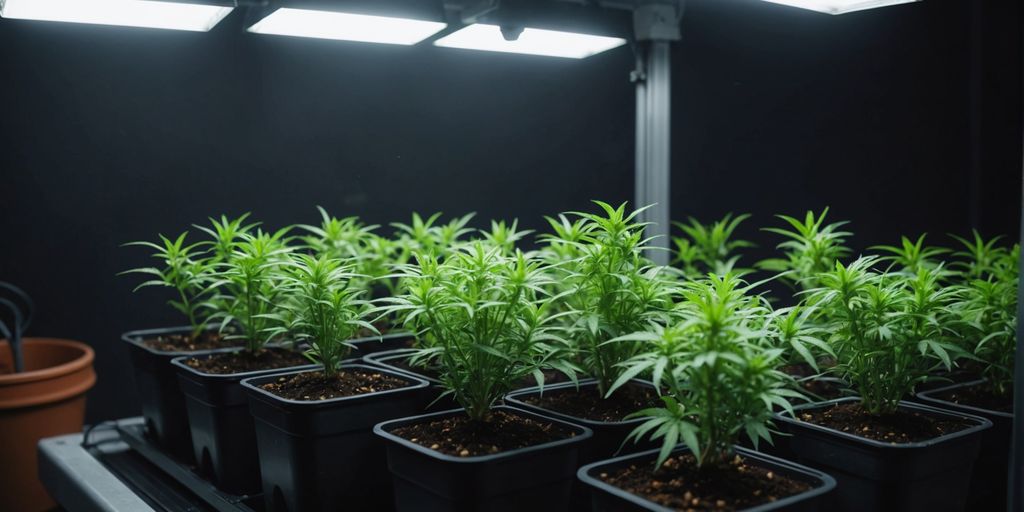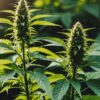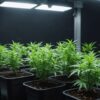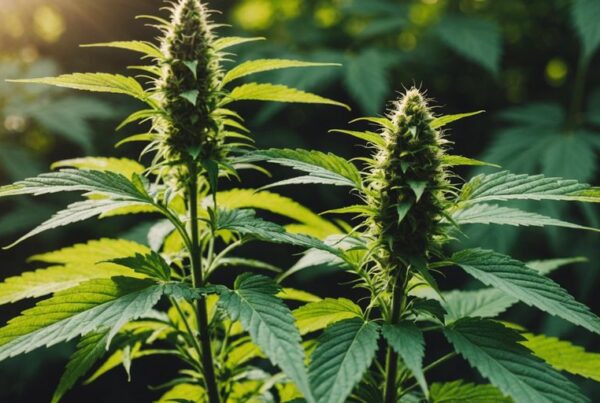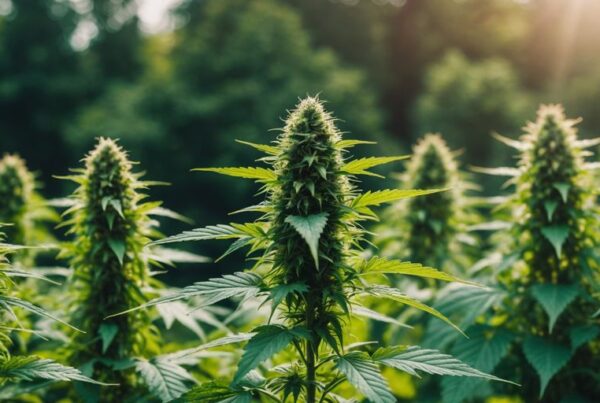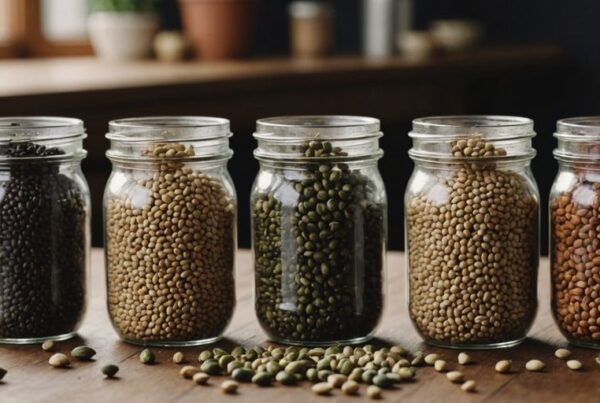Growing cannabis can be rewarding, but it all starts with the seedling stage. This phase is short but crucial for the plant’s overall health. Proper care during this period sets the foundation for a strong and healthy cannabis plant. Let’s dive into some essential tips to help your seedlings thrive.
Key Takeaways
- Choosing high-quality seeds and the right growing medium is the first step to healthy seedlings.
- Proper watering techniques are vital; avoid overwatering and underwatering.
- Lighting plays a crucial role; ensure the right light source and cycles to avoid light burn.
- Maintaining the right temperature and humidity levels is essential for seedling growth.
- Nutrient management is key; start feeding nutrients at the right time and avoid nutrient burn.
Choosing the Right Genetics and Medium
Selecting High-Quality Seeds
When starting your cannabis grow, always begin with high-quality seeds. The cannabis you harvest will only be as good as the genetics you start with. Look for dark, plump seeds with distinct "tiger stripes" for the best results. Avoid small, white, or green seeds as they are less likely to germinate successfully.
Optimal Soil and Containers
Selecting the best medium for growing cannabis is crucial for thriving cannabis plants and maximizing your harvest. Choose a well-draining soil mix rich in organic matter. Containers should have good drainage holes to prevent waterlogging. Fabric pots are a great option as they allow for better root aeration.
Importance of pH Levels
Maintaining the right pH level in your growing medium is essential for nutrient uptake. For soil, aim for a pH between 6.0 and 7.0. Regularly test the pH of your water and soil to ensure your plants are in the optimal range.
Picking the right genetics, containers, and medium for your seedlings is the first step to a successful grow. Make sure to consider your experience, budget, and whether you’re growing indoors or outdoors.
Watering Techniques for Cannabis Seedlings
Proper watering is crucial for the healthy growth of cannabis seedlings. Mastering the art of watering cannabis can make a significant difference in your plant’s development. Here are some essential techniques to ensure your seedlings thrive.
Proper Watering Schedule
Watering cannabis seedlings properly is often challenging for beginners. Start with around 100 ml of water and increase the amount as your plants grow. The exact amount of water will depend on the size of the pots, but generally, 1–2 cups of water at a time is sufficient.
Signs of Overwatering and Underwatering
Overwatering and underwatering are common issues. Overwatered plants may have droopy leaves, while underwatered plants will appear wilted and dry. Keep an eye on your plants and adjust your watering schedule accordingly.
Using the Right Water Quality
The quality of water you use is just as important as the amount. Use clean, pH-balanced water to avoid any potential issues. Aim for a pH level between 6.0 and 7.0 for optimal growth.
Remember, cannabis seedlings take up most of their water through their leaves while their roots are still developing. Mist your seedlings regularly to keep them moist.
By following these watering techniques, you can ensure your cannabis seedlings grow into healthy and strong plants.
Lighting Essentials for Seedling Growth
Choosing the Right Light Source
Selecting the right light source is crucial for healthy cannabis seedlings. LED lights are a popular choice because they provide full-spectrum light and are energy-efficient. Alternatively, CFL lights can be used for their cool, low-watt output, which is gentle on young plants. Natural sunlight is also an option, but make sure your seedlings get direct light without any shadows.
Setting Up Light Cycles
Cannabis seedlings thrive under an 18/6 light cycle, which means 18 hours of light followed by 6 hours of darkness. This cycle mimics the natural conditions and helps the seedlings grow strong. Set up a timer to automate the light cycle, ensuring consistency.
Avoiding Light Burn
To prevent light burn, keep the light source at an appropriate distance from the seedlings. If the light is too close, it can cause the leaves to burn and stunt growth. A good rule of thumb is to start with the light about 24 inches above the seedlings and adjust as they grow.
Proper lighting is essential for the healthy growth of cannabis seedlings. Make sure to monitor and adjust the light setup regularly to meet the needs of your plants.
Temperature and Humidity Control
Cannabis seedlings thrive in warm, humid conditions. Maintaining the right environment is crucial for their growth and development. Let’s dive into the specifics of temperature and humidity control for your cannabis seedlings.
Nutrient Management for Seedlings
When to Start Feeding Nutrients
Cannabis seedlings are delicate and can easily get "burned" if given too many nutrients too soon. It’s best not to feed them during the first couple of weeks. The nutrients packed in the seeds are usually enough to support initial growth. Once the first true leaves appear, you can start feeding with a very weak nutrient solution.
Types of Nutrients Needed
The three main nutrients cannabis plants need are nitrogen (N), phosphorus (P), and potassium (K). These are often referred to as NPK. Here’s a simple table to help you understand the ideal nutrient levels:
| Nutrient | Importance |
|---|---|
| Nitrogen (N) | Vital for leaf growth |
| Phosphorus (P) | Essential for root and flower development |
| Potassium (K) | Helps with overall plant health |
Avoiding Nutrient Burn
Nutrient burn is a common issue when seedlings are given too many nutrients. Signs include yellowing leaves and burnt tips. To avoid this, start with a low nutrient dose and gradually increase it as the plant grows. Always monitor your plants for any signs of distress and adjust accordingly.
Remember, it’s easier to add more nutrients later than to fix a plant that’s been overfed.
Transplanting Cannabis Seedlings
When it comes to moving your young cannabis plants to a new home, timing is key. You should transplant them when they have outgrown their current container. It’s important to choose the right pot size for this stage, with 3-liter plastic pots being a suitable option. These smaller containers make it easier to monitor root growth and prevent overwatering. For feminized seeds, transplanting is less stressful, especially when using Easy Start germination pots. It’s recommended to transplant once the seedlings have developed sets of true leaves that cover the entire circumference of their current container. To transplant, create a small hole in the center of the new container, place the seedling with its taproot facing down, and cover lightly with soil. Keep the soil moist but not waterlogged, and ensure the seedlings receive adequate light for healthy growth.
Common Issues and Troubleshooting
Identifying Pests and Diseases
Pests and diseases can quickly harm your cannabis seedlings. Look for signs like yellowing leaves, spots, or unusual growth patterns. Common pests include spider mites, aphids, and fungus gnats. Diseases such as powdery mildew and root rot can also be problematic. Regularly inspect your plants and use organic pesticides or beneficial insects to keep pests at bay.
Dealing with Stunted Growth
If your seedlings are not growing as expected, it could be due to several factors. Poor lighting, incorrect watering, and nutrient deficiencies are common culprits. Ensure your plants get enough light and water, and consider using a balanced fertilizer. If the seedling isn’t transferred to a bigger container in time, it can cause symptoms of overwatering, nutrient deficiencies, and wilting.
Correcting Nutrient Deficiencies
Nutrient deficiencies can manifest in various ways, such as yellowing leaves or slow growth. Identify the specific deficiency by observing the symptoms and adjust your feeding schedule accordingly. Common deficiencies include nitrogen, phosphorus, and potassium. Use a nutrient solution designed for cannabis seedlings to address these issues effectively.
Regular monitoring and prompt action can prevent most common issues with cannabis seedlings. Stay vigilant and proactive to ensure healthy and strong plants.
Conclusion
Taking care of cannabis seedlings might seem tough, especially for beginners, but it’s a crucial step for a bountiful harvest. These young plants need the right balance of water, light, and warmth to grow strong. By paying close attention to their needs and creating a good environment, you can help your seedlings thrive. Remember, every great cannabis plant starts with a healthy seedling. So, take your time, follow the tips, and watch your plants flourish.
Frequently Asked Questions
How often should I water my cannabis seedlings?
Water your cannabis seedlings when the top inch of the soil feels dry. Overwatering can harm them, so it’s better to keep the soil slightly moist but not soaked.
What type of light is best for cannabis seedlings?
Soft light, like a CFL or a dimmed LED, works best for the first few weeks. Avoid strong sunlight or intense light sources to prevent light burn.
How can I tell if my seedlings are getting too much water?
If the leaves look droopy and the soil is always wet, your seedlings might be overwatered. Let the soil dry out a bit before watering again.
When should I start feeding nutrients to my cannabis seedlings?
You can start feeding nutrients when the seedlings have developed a few sets of leaves. Begin with a mild nutrient solution to avoid nutrient burn.
What temperature and humidity levels are ideal for cannabis seedlings?
Keep the temperature between 70-80°F and maintain humidity levels around 60-70%. Use fans and ventilation to control the environment.
How do I avoid transplant shock when moving seedlings to a bigger pot?
Transplant when the seedlings have a strong root system and do it gently. Prepare the new container ahead of time and water the seedlings well after transplanting.

